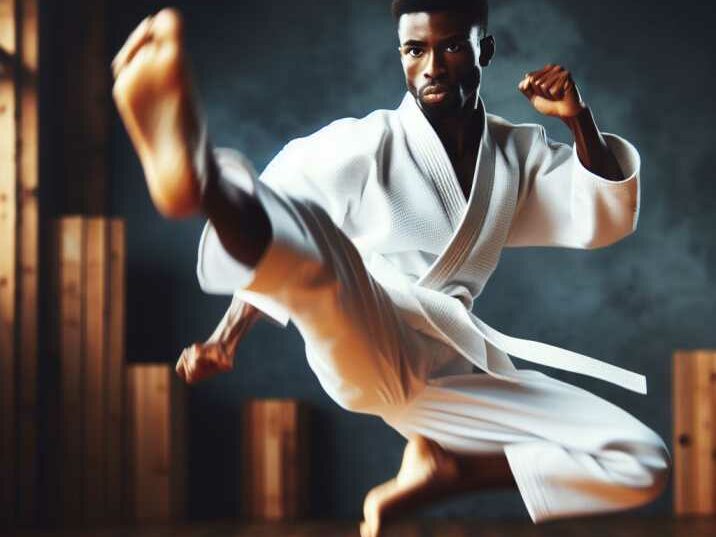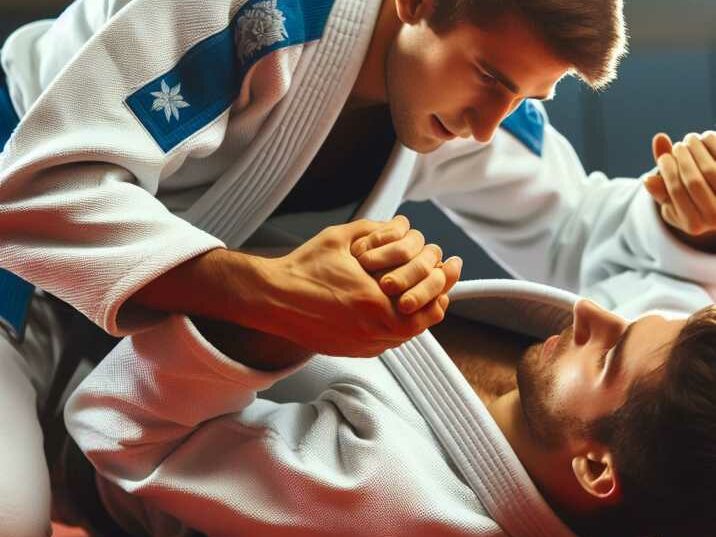Introduction:
Table of Contents
In the realm of self-defense, mastering martial arts is akin to wielding a powerful shield against potential threats. From ancient disciplines rooted in tradition to modern adaptations tailored for practicality, the world of defensive martial arts offers a diverse array of styles, each with its unique philosophy and techniques. In this guide, we’ll delve deep into the realm of defensive martial arts, exploring different types, their origins, techniques, and practical applications. Whether you’re a seasoned practitioner or a novice enthusiast, join us on this journey to uncover the secrets of self-defense.

Understanding Defensive Martial Arts:
Defensive martial arts encompass a range of disciplines focused on protecting oneself from physical harm. Unlike offensive martial arts, which emphasize aggression and attack, defensive styles prioritize techniques for evading, blocking, and neutralizing threats. By honing these skills, practitioners develop not only physical prowess but also mental resilience and situational awareness.
Karate:
Karate, originating from Japan, is one of the most well-known and practiced martial arts globally. With its emphasis on striking techniques using punches, kicks, knee strikes, and open-hand techniques, Karate equips practitioners with powerful defensive skills. The discipline also includes kata (forms) and kumite (sparring), fostering discipline, focus, and respect.

Taekwondo:
Hailing from Korea, Taekwondo is renowned for its dynamic kicking techniques and emphasis on speed and agility. Practitioners of Taekwondo learn a variety of kicks, including the iconic roundhouse kick and flying kicks, making it a formidable defensive martial art. The discipline also incorporates patterns (poomsae) and sparring (kyorugi), promoting physical fitness and mental discipline.
Jiu-Jitsu:
Brazilian Jiu-Jitsu (BJJ) is a grappling-based martial art that focuses on ground fighting and submission holds. Originating from traditional Japanese Jiu-Jitsu, BJJ emphasizes leverage and technique over brute strength, making it suitable for practitioners of all sizes and genders. With its emphasis on positional control and submissions, BJJ is highly effective for self-defense situations, especially against larger opponents.

rav Maga:
Developed in Israel, Krav Maga is a practical and efficient self-defense system used by military and law enforcement agencies worldwide. Unlike traditional martial arts, Krav Maga prioritizes instinctive movements and aggressive counterattacks, aiming to neutralize threats swiftly. With its focus on real-world scenarios and practical techniques, Krav Maga is highly effective for self-defense in unpredictable situations.
Aikido:
Aikido, a Japanese martial art founded by Morihei Ueshiba, focuses on redirecting an opponent’s energy and using it against them. Through circular movements and joint locks, Aikido practitioners learn to neutralize attacks without causing harm, making it ideal for self-defense while minimizing injury to both parties. Aikido also emphasizes harmony and peaceful resolution, aligning with its philosophical principles.
Practical Applications and Benefits:
Apart from equipping practitioners with self-defense skills, martial arts offer a myriad of physical, mental, and emotional benefits. Regular training in defensive martial arts improves flexibility, strength, and cardiovascular health, enhancing overall fitness levels. Moreover, martial arts instill discipline, confidence, and resilience, empowering individuals to face challenges both on and off the mat.
Table providing a concise overview of various defensive martial arts:
| Martial Art | Origin | Main Techniques | Focus | Popular for |
|---|---|---|---|---|
| Karate | Japan | Punches, kicks, knee strikes, open-hand | Striking | Self-defense, discipline, physical fitness |
| Taekwondo | Korea | Dynamic kicks, speed, agility | Kicking | Olympic sport, self-defense, fitness training |
| Jiu-Jitsu | Japan/Brazil | Grappling, ground fighting, submissions | Grappling | Self-defense, Brazilian Jiu-Jitsu competitions |
| Krav Maga | Israel | Aggressive counterattacks, practical | Self-defense | Military/law enforcement training |
| Aikido | Japan | Redirecting energy, joint locks | Joint locks | Harmony, self-defense, spiritual growth |
This table provides a snapshot of each martial art’s origin, main techniques, focus, and popular applications.
Conclusion:
In the journey of self-discovery and personal development, the practice of defensive martial arts serves as a guiding light, illuminating the path towards physical mastery and inner strength. Whether you seek to enhance your self-defense skills, cultivate discipline, or embark on a journey of self-improvement, the diverse world of martial arts offers something for everyone. So, embrace the martial arts journey, and let the spirit of perseverance and determination propel you forward towards greatness.
Frequently Asked Questions:
- What are the best defensive martial arts for beginners?
- Answer: Taekwondo and Aikido are excellent choices for beginners due to their emphasis on fundamental techniques and principles.
- Can anyone learn martial arts for self-defense?
- Answer: Yes, martial arts are suitable for individuals of all ages and fitness levels. With proper guidance and training, anyone can acquire self-defense skills.
- Are defensive martial arts effective in real-life situations?
- Answer: Yes, defensive martial arts teach practical techniques tailored for real-world scenarios, empowering individuals to defend themselves effectively.
- How often should one train in martial arts to see progress?
- Answer: Consistent practice is key to mastering martial arts. Aim for regular training sessions, at least two to three times per week, to see noticeable progress.
- Can martial arts help improve mental health?
- Answer: Yes, martial arts promote mental well-being by reducing stress, enhancing focus, and boosting confidence levels through disciplined training.


